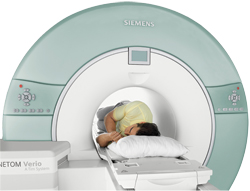|
Taming Telsa
Continued...
 In today’s high-tech economy, the correlation
between a state’s economic well-being and
the strength of its research and development
capabilities is well documented. A recent report
found that of the top 30 high-technology
metropolitan areas, 29 were home to or within
close proximity of a major research university.
“It is not surprising that most states consider
their universities to be critical components of
their intellectual infrastructure," says Lewis. “The
importance of research and development capacity to the economic prosperity of a state and nation is predicted to increase in the coming years, and the research center is designed to address this reality." In today’s high-tech economy, the correlation
between a state’s economic well-being and
the strength of its research and development
capabilities is well documented. A recent report
found that of the top 30 high-technology
metropolitan areas, 29 were home to or within
close proximity of a major research university.
“It is not surprising that most states consider
their universities to be critical components of
their intellectual infrastructure," says Lewis. “The
importance of research and development capacity to the economic prosperity of a state and nation is predicted to increase in the coming years, and the research center is designed to address this reality."
Existing and proposed partnerships with other
institutions, such as the University of Alabama at
Birmingham, U.S. Army Aeromedical Research
Laboratory at Fort Rucker and the Andrews-Paulous Research Institute, will provide the clinical network
to support work on biomedical applications of the imaging
technologies being developed at Auburn.
For example, Denney cites potential research in partnership
with Fort Rucker on soldiers with neck and spinal injuries,
as well as those with traumatic head injuries and post
traumatic stress syndrome.

Commercialization of these newly developed technologies
will support expansion of the enter’s capability and
increase its impact in the research and development arena.
“This collaboration will provide a research platform of the
highest level," adds Zhang. “We believe this alliance will
result in improvements in health, education and economic
growth for the state of Alabama and the nation."
Around the globe, MRI-related research is being conducted
on cognitive neuroscience, etabolic imaging and
pharmaceuticals, as well as diabetes and cardiac research.
A new seminar series, the Ginn MRI Distinguished Lecture
Series, will provide Auburn faculty and graduate tudents the
opportunity to interface with leading MRI researchers from
around the world.
“The MRI Research Center and the supporting alliances are
prime examples of how state funds can be invested and
institutions collaborate with the private sector to develop a
world-class research center to advance science and
technology," says Auburn University President Jay Gogue.
“We believe that this collaboration establishes a precedent on
which cooperation between Auburn and other institutions can
build to improve the quality of life in the global community
and promote economic development for Alabama."
<< Previous
|
 In today’s high-tech economy, the correlation
between a state’s economic well-being and
the strength of its research and development
capabilities is well documented. A recent report
found that of the top 30 high-technology
metropolitan areas, 29 were home to or within
close proximity of a major research university.
“It is not surprising that most states consider
their universities to be critical components of
their intellectual infrastructure," says Lewis. “The
importance of research and development capacity to the economic prosperity of a state and nation is predicted to increase in the coming years, and the research center is designed to address this reality."
In today’s high-tech economy, the correlation
between a state’s economic well-being and
the strength of its research and development
capabilities is well documented. A recent report
found that of the top 30 high-technology
metropolitan areas, 29 were home to or within
close proximity of a major research university.
“It is not surprising that most states consider
their universities to be critical components of
their intellectual infrastructure," says Lewis. “The
importance of research and development capacity to the economic prosperity of a state and nation is predicted to increase in the coming years, and the research center is designed to address this reality."


